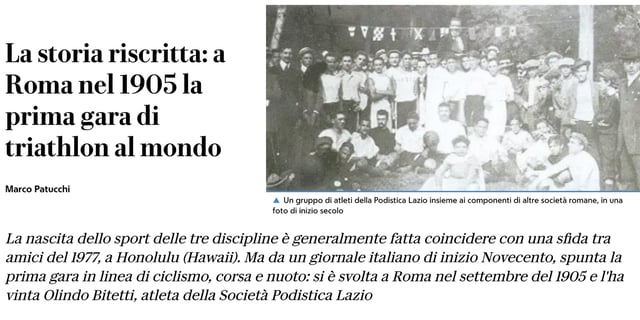
Triathlon is a sport recognised by the International Olympic Committee which is winning over increasing audiences, as well as athletes who are not afraid of intense effort. It is no accident that it’s considered one of the toughest sports in the world, because it demands effort from every fibre of the athlete's muscles. But above all, this is a test of willpower and individual challenge.
Is this what makes triathlon so attractive?
Triathlon: what it is
When we talk about triathlon, we mean a sport (individual or relay) with a very precise character: it consists of three different disciplines, each of which occupies a specific stage of the race and is completed in sequence by the athlete.
These are swimming, cycling and running.
The three segments are punctuated by moments in which the triathletes (as they're called) change equipment. These changes are known as "transition stages". Handling the transitions smoothly and quickly is almost as important as the swimming, cycling and running.
How a triathlon race works
On the starting blocks, each category (male and female) begins alone. Races can be individual or relay, as we have discussed. Each competition combines the three segments of swimming, cycling and running.
These are the common features in all triathlon events, but every competition may have specific rules and be a particular type of triathlon.
The most famous types are undoubtedly Olympic triathlon and Ironman. The disciplines and the order do not change, but the distances do.
Distances for Olympic triathlon are 1.5 km swimming, 40 km cycling and 10 km running. This type of triathlon is what we might call standard. During the Olympic games, these are the distances used.
Ironman, on the other hand, was invented in the USA and is actually a commercial name and a registered brand. It has found extraordinary success, to the point that today nearly all triathletes dream of winning an Ironman competition, because it's a real challenge to their mental and physical limits.
Ironman distances are daunting: 3.9 km swim, 180.2 km cycle and then a full marathon of 42.2 km. Resistance, concentration and nerves of steel are the requisites for Ironman participants.
The history of triathlon
These days nearly everyone has heard of triathlon; it's hard not to be fascinated by such a tough sport. But triathlon is only a little over 45 years old.
Its story began at a US military base in Hawaii in 1977.
Some soldiers were unable to decide which resistance sport was toughest, swimming, cycling or running. Hence the idea of combining the three in a single race divided into three segments: triathlon instantly became the toughest sport.
The appeal of triathlon has been astonishing. Just 12 years after that initial race in Hawaii, the first world championships were held in Avignon, France, under the auspices of a new federation, the International Triathlon Union. Simultaneously, a European foundation was also formed, and European championships held.
The sport's Olympic debut came only in 2000 in Sydney, when triathlon was admitted as an Olympic sport for the very first time.
The number of amateur and professional athletes turning to triathlon has increased constantly over the years, and still more in recent times. The huge international success of Ironman probably contributed to this growth. In fact the world's toughest resistance sport has an extraordinary echo everywhere, partly because well-known faces and celebrities are often involved.
Triathlon's aura of legendary challenge and the presence of famous athletes have brought even more attention to the sport.



